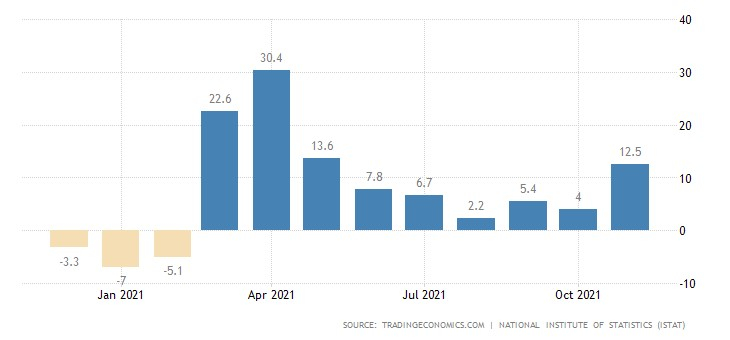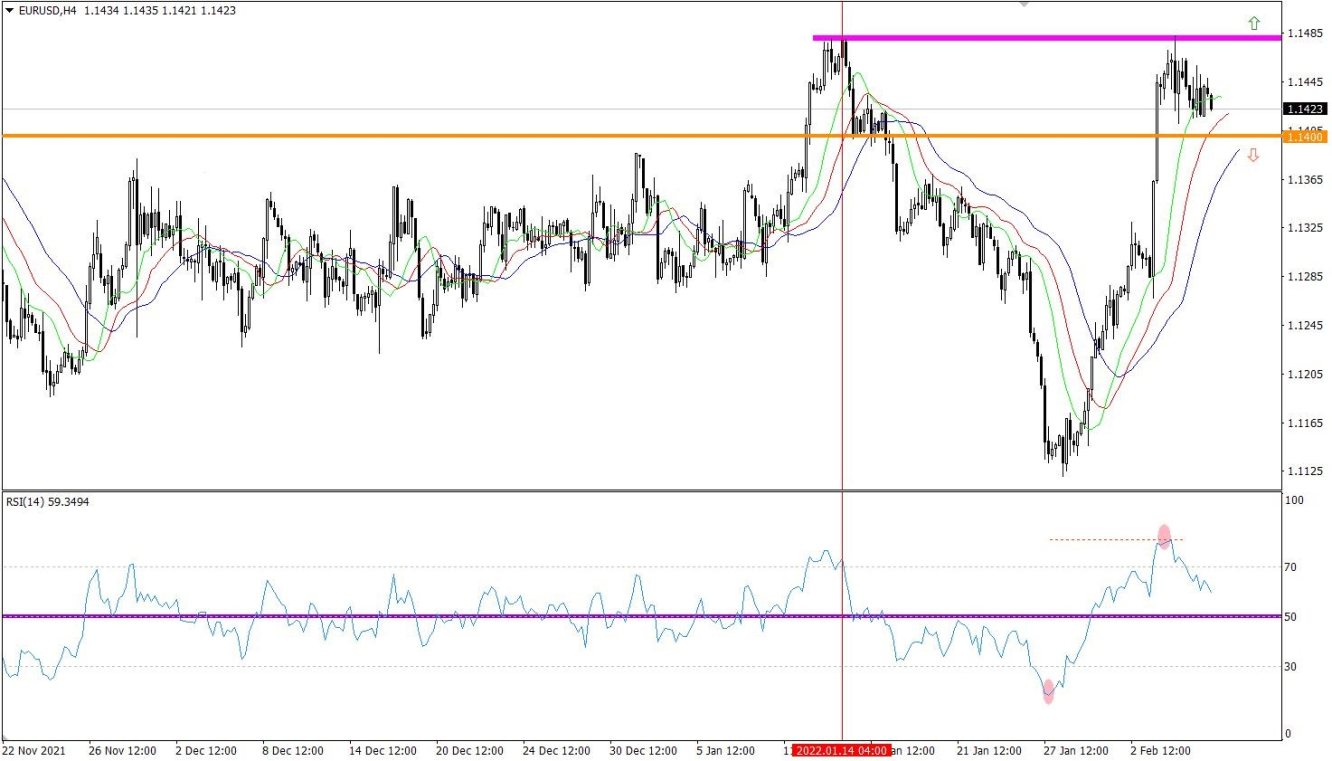Generally speaking, the euro is flat. However, if we take a closer look, it slowly moves down. No doubt, this is due to the empty macroeconomic calendar. The sideways movement will last until Thursday when the US inflation data is published.
Although macroeconomic releases are expected in Italy and Spain, the statistics of individual eurozone countries are projected at around zero, at least in market terms. If taking these forecasts into account, the euro is unlikely to react to the results. Italy’s retail sales are estimated to decrease to 9.0% versus 12.5%, while Spain’s industrial production growth is projected to slow down to 4.4% from 4.8%.
The euro/dollar pair bounced off the swing high as of Jan. 14, which led to a slowdown in the uptrend. Consequently, the pair traded in the sideways range between 1.1410 and 1.1480.
The Relative Strength Index (RSI) was above 80 on the 4-hour chart for a long time, signaling the overbought euro. As the quote bounced off, the indicator passed through line 70 from top to bottom, indicating the beginning of a new corrective stage.
The Alligator indicator signals the uptrend on the 4-hour and daily charts as the moving averages are not intertwined. On the daily chart, the pair is in the corrective move from the bottom of the downtrend.
Outlook
The sideways movement in the 1.1410/1.1480 range is likely to end soon. In this light, a breakout of one or the other limit of the sideways channel is needed. Long positions could be opened after consolidation above 1.1485, with the target at 1.1580.
Meanwhile, traders could consider going short after fixing below 1.1400 with the target in the 1.1350 – 1.1300 range. As for complex indicator analysis, there is a variable signal for short-term and intraday trading due to the flat market.



